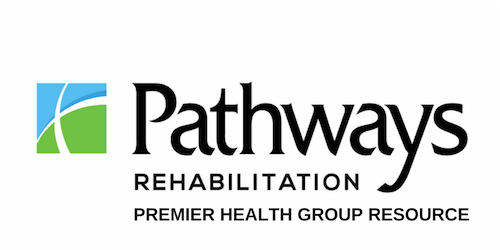Inpatient Treatment for Alcohol and Drug Addiction: How Does it Work?
Inpatient treatment is one of the most consistently effective ways of dealing with alcohol and drug addiction. The safe and healthy environment created for patients allows them to focus all of their time and energy into getting sober.
But what really makes these treatment centers effective is how it teaches addicted people to stay sober. This means even after the program is over, they can still cope with a lifestyle that is free from substance abuse.
Inpatient treatment is often defined as a program wherein the addicted individual stays in a hospital facility that provides lodging and food alongside the standard medical procedures for the duration of their stay. As simple and easy as this is to understand, it does not paint the whole picture.
To understand why inpatient rehab works, it is important to know how it works. This gives clients information that will help them adjust their expectations so that they don’t get overwhelmed.
When it comes to inpatient rehab, treatment may last for weeks or even months. On the other hand, outpatient treatment is less focused and less structured but allows for more flexibility in terms of schedules. Also known as partial hospitalization, outpatient drug rehab is only recommended for patients with more minor addictions. This means patients with chronic pain, or those in need of PTSD treatment, for example, should not go for outpatient rehab. The differences between outpatient and inpatient care are not negligible. For severe drug and alcohol addiction, a proper inpatient program that will provide treatment therapies and depression treatment, on top of helpful medications, is necessary.
Patients who are admitted to inpatient facilities are often the ones with moderate to severe cases of addiction. These patients benefit from the change in environment and the constant support provided by medical professionals and addiction experts.
Inpatient treatment welcomes those who require continuous medical care. Patients who might relapse or go into serious withdrawal are in most need of this type of treatment. This is because severe addiction can cause life-threatening withdrawal symptoms. Some patients have developed a physical dependence on the substance and therefore cannot quit on their own because it will put their life at risk.
A typical day in a residential treatment facility involves therapy, meetings, recreational activities, etc. The facility will serve as their temporary home while they deal with the medical issue at hand. Inpatient treatment is designed to make medical assistance accessible to the patient. They receive care 24/7 so that their withdrawal symptoms can be monitored by trained professionals.
Inpatient Treatment for Drug and Alcohol Addiction
Inpatient rehab isn’t just about detox. Under this specialized program, substance use disorders are treated with both detox and behavioral therapy. Medical detox combined with behavioral therapy results in better success rates. While medical detox gradually lowers the patient’s intake, behavioral therapy tackles the psychological aspect of addiction. If done correctly, these treatments can leave a long-lasting and life-changing impact.
The drug addiction treatment programs are personalized to address the fact that addiction affects everyone differently. Addiction is an illness that has physical and psychological effects, and so the experience is not the same for everyone. Every patient will have their own set of symptoms, their own reasons for getting addicted in the first place, and their own goals when it comes to recovery. The only thing patients will universally agree on is that addiction feels overwhelming. Addicted individuals often feel like they don’t have a choice but to keep drinking or taking drugs.
To make matters worse, a co-occurring disorder such as posttraumatic stress disorder, depression, anxiety, or a problem with binge drinking or binge eating can make the rehab process more difficult.
Counseling, addiction education, group therapy, and other similar methods can make it easier for the patient to address the root cause of their addictive behavior. The main benefit of inpatient rehab is that it uses a structured program that re-establishes the person’s control over their own life. The comprehensive nature of inpatient drug rehab helps tackle every single aspect of addiction and its effects. The client will definitely get to understand addiction for what it is: a medical condition.
Inpatient rehab allows the patient to safely detox from the substance that they are addicted to. Detox is a very challenging stage for most patients. But they will receive medications and services that will make the process more bearable.
Another advantage of inpatient rehab is it teaches recovery skills that can help them adjust with the sober lifestyle once they are back in the real world. This will also help them channel their energy into something other than substance abuse.
Many treatment plans include scheduled breaks and recreational time. Some facilities allow friends and family to visit when it is appropriate.
Because of intensive care, inpatient rehab tends to be expensive. But most facilities accept insurance or offer convenient payment methods to help patients receive the treatment they need. There are insurance options available for those who need access to residential treatment programs. Entering treatment should not be a challenge. Everyone struggling with opioid addiction, alcohol use disorder, or any substance use disorder should get the care they need from treatment specialists and addiction experts.
With medical support and in a safe environment, patients struggling from addiction can make significant strides towards long term sobriety.
Everyone experiences addiction differently, so the actual treatment procedure will be personalized and tailored to suit a patient’s specific needs. Look for an addiction treatment facility nearby today.
###
For more information about Rehab Near Me, contact the company here:
Rehab Near Me
James Thomas
855-227-9535
hi@rehabnear.me
 Pathways Drug Rehabilitation Luxury Addiction Treatment & Detox Center
Pathways Drug Rehabilitation Luxury Addiction Treatment & Detox Center

